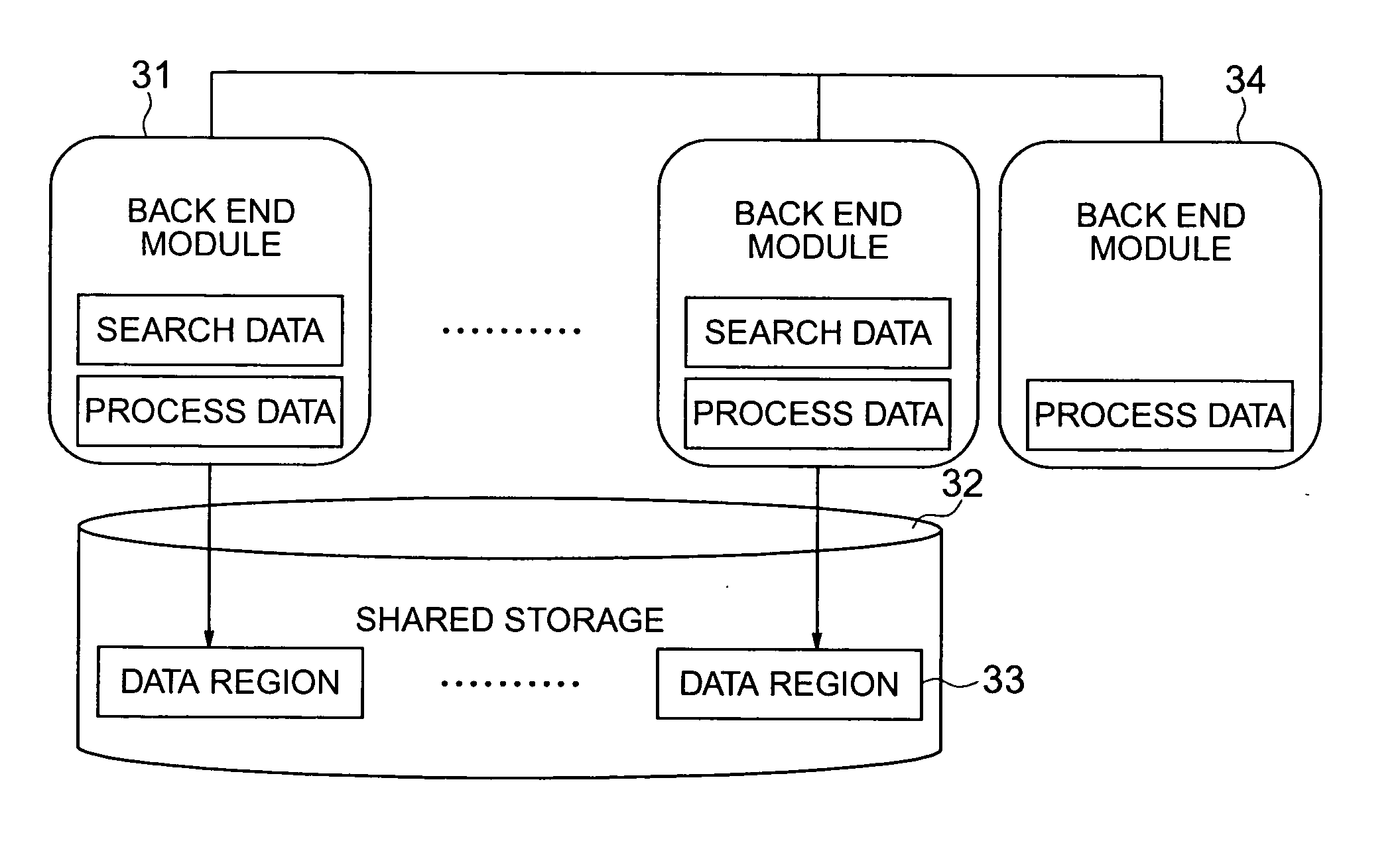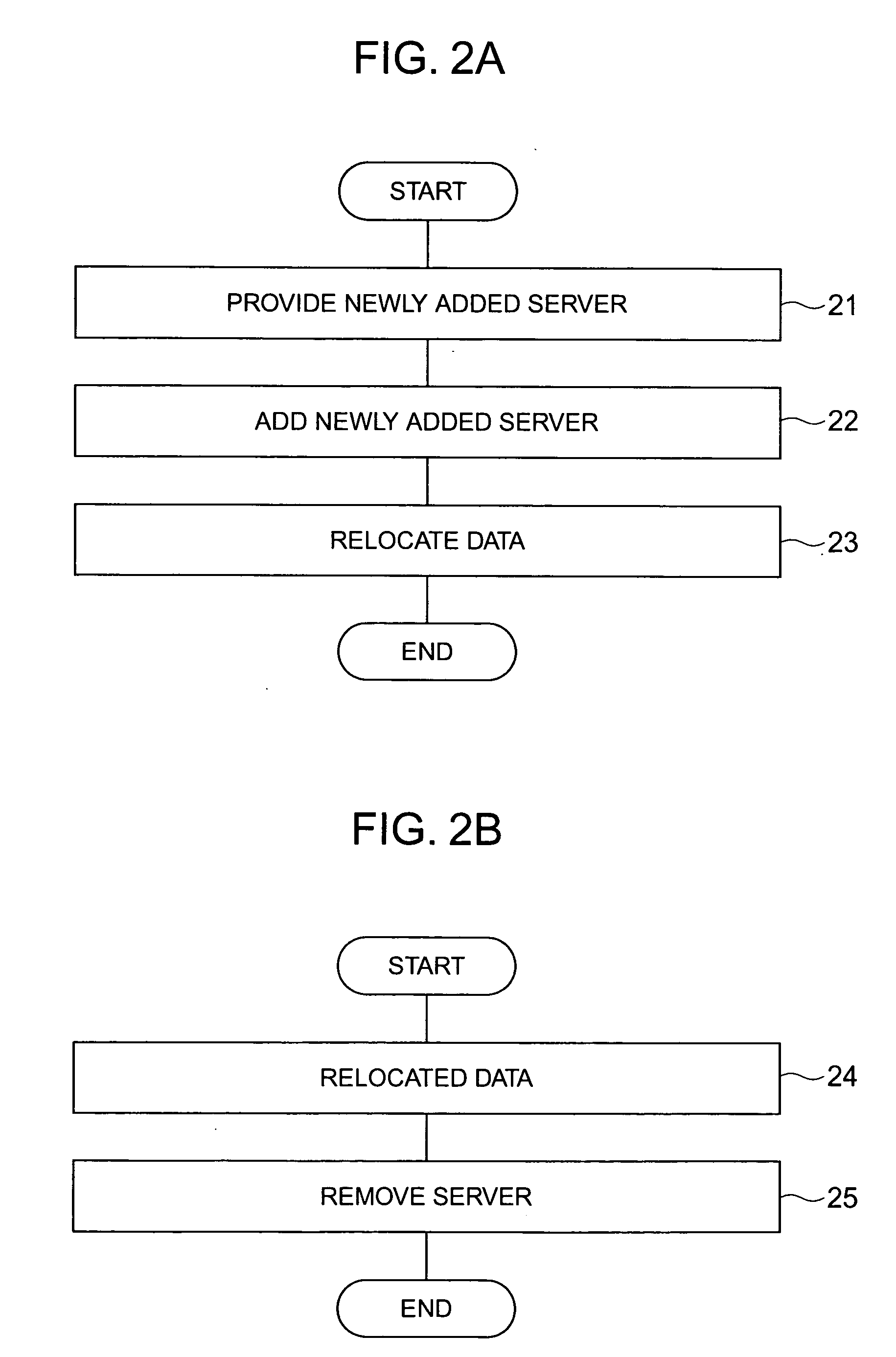Method of changing system configuration in shared-nothing database management system
- Summary
- Abstract
- Description
- Claims
- Application Information
AI Technical Summary
Benefits of technology
Problems solved by technology
Method used
Image
Examples
Embodiment Construction
[0066] In the following, one embodiment of the present invention will be described with reference to FIG. 1.
[0067] A shared-nothing database management system (1) in this embodiment comprises a front end module (2) which mainly serves as a user interface; back end modules (3) each for searching and processing data; a scheduler module (4) for creating a schedule for adding and removing a database server; a server monitoring module (5) for monitoring database servers for loading; a common storage (6) shared among a plurality of back end modules; and a mapping module (7) for managing the mapping between the back end modules and the common storage.
[0068] The back end modules are logically classified into an active server group (8) and a pool server group (9) for management. The front end module (2) accepts a query from the user or a program, creates a plan in accordance with the query for a plurality of database servers, and returns the result. In this embodiment, since the active ser...
PUM
 Login to View More
Login to View More Abstract
Description
Claims
Application Information
 Login to View More
Login to View More - R&D
- Intellectual Property
- Life Sciences
- Materials
- Tech Scout
- Unparalleled Data Quality
- Higher Quality Content
- 60% Fewer Hallucinations
Browse by: Latest US Patents, China's latest patents, Technical Efficacy Thesaurus, Application Domain, Technology Topic, Popular Technical Reports.
© 2025 PatSnap. All rights reserved.Legal|Privacy policy|Modern Slavery Act Transparency Statement|Sitemap|About US| Contact US: help@patsnap.com



